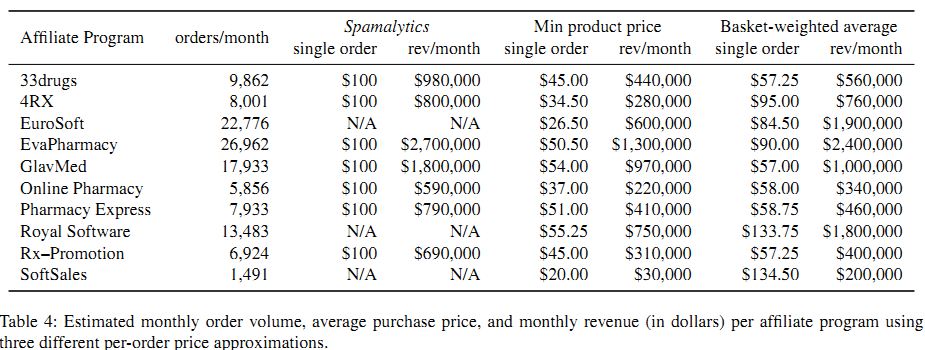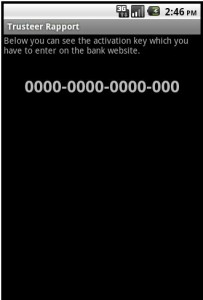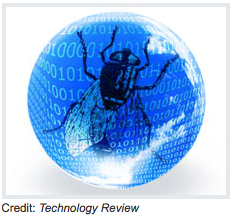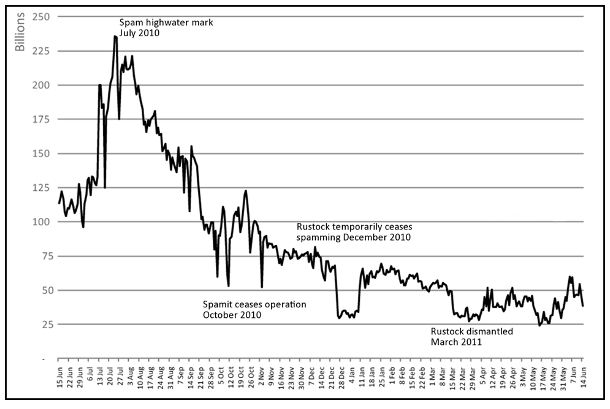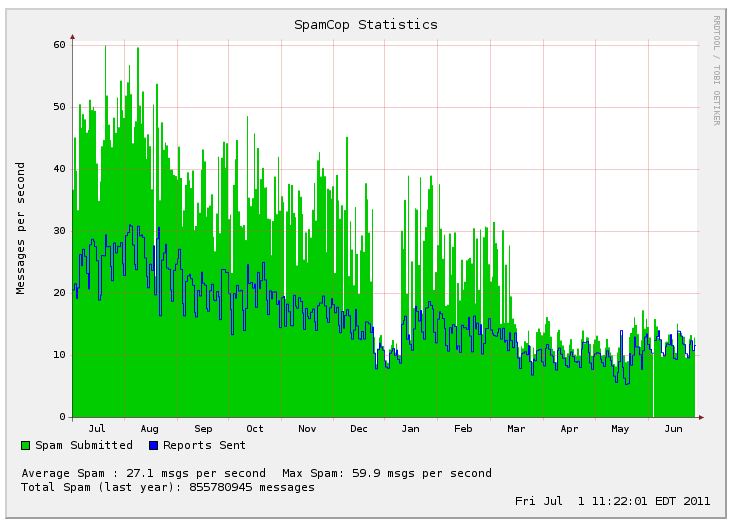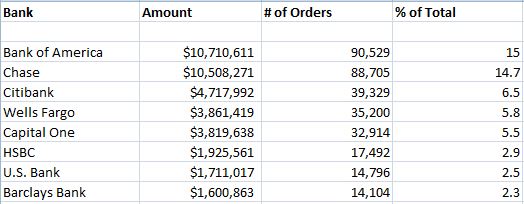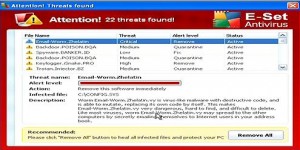Spam may be synonymous with male enhancement drugs, but new research shows that Americans are far more likely than buyers in other countries to turn to spam-advertised pharmacies to obtain pills to treat serious ailments–a trend that reflects differences in government health care and prescription drug policies.
Researchers at the University of California, San Diego, have collected the first data showing which drugs consumers most often buy from spam advertisements, and how much they spend at shadowy online apothecaries.
“People are going to them when they’re either too embarrassed to talk to a doctor, or when it would be far too expensive to buy these drugs otherwise,” said Chris Kanich, a PhD candidate at UCSD’s computer science department, and lead researcher of the study.
Previous estimates of monthly revenue from spam have varied dramatically, from $300,000 to more than $58 million. The UCSD researchers found that the largest rogue Internet pharmacies generate between $1 million and $2.5 million in sales each month, although they caution that their estimates are conservative.
Kanich says the figures show that although the spam-advertised market is substantial, it is not nearly as big as some have claimed, and falls short of annual expenditures on technical anti-spam solutions by corporations and ISPs.
This is an excerpt from a piece I wrote that was published today in MIT Technology Review. Read the full story here. The UCSD paper is available at this link (PDF).



